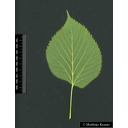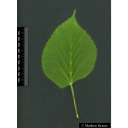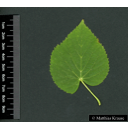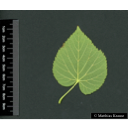Useful information about the taxon (species, subspecies, variety...)
Tilia dasystyla Steven 1832
Malvaceae
(APG IV)Caucasian lime
Taxon concept: The Plant List (2014), version 1.1
Distribution: Caucasus, North Iran
Size: 20 - 30 (m)
Tilia dasystyla Steven - Accepted: Tilia dasystyla Steven bei The Plant List (2014), version 1.1; Familie: Malvaceae (APG III)
- Color of flower
- yellowish
- Flowers
- hermaphrodite flowers; flowers with pubescent styles; inflorescence with 3-5 flowers fused to a bract by the glabrous peduncles
- Flower ecology
- insect-pollinated (entomophilous) (honeybees)
- Life form
- tree
- Leaves
- heart-shaped; lower surface with fasciculate hairs in the axils of the main veins; petiole 26-56 mm long
- Foliage persistence
- deciduous
- Fruits
- nut fruit
- Fruit ecology
- wind-dispersed (anemochorous)
- Natural occurrence (habitat)
- hardwood forests, oak-hornbeam forests; woodlands, rocks or scree, ravines, valleys of high mountains, valley slopes, south-facing steep slopes
- Vegetation typ and synecology (plant community)
- temperate mixed deciduous broad-leaved forests to warm-temperate (Mediterranean) mixed deciduous/evergreen forests (in communities of the Orobo-Fagenion orientalis)
- Usage
- occasionally used as a beekeeping plant; used for silvicultural purposes locally in the Caucasus
- Bark
- grey, with longitudinal, narrow furrows
- Altidudinal lower limit (sea level in m)
- 500
- Altitudinal higher limit (sea level in m)
- 1,500
Anonymus (online): Fire Effects Information System (FEIS). See: https://www.feis-crs.org/feis/; Erhardt, W., Götz, E., Bödeker, N. & Seybold, S. (2008): Der große Zander. Enzyklopädie der Pflanzennamen. Band 2. Arten und Sorten. Eugen Ulmer KG, Stuttgart (Hohenheim), 18. Aufl., 2103 S.; The International Plant Names Index (2009). Published on the Internet http://www.ipni.org; Courtesy to IPNI, 2009. Exported from IPNI at date: 2009-09-22 20:17:51;
Diese Webseite verwendet Google Maps, um Karten und Standorte von Pflanzen in den Hohenheimer Gärten anzuzeigen. Dadurch werden unter Umständen Daten an Google weitergeleitet, was mit einer Verarbeitung Ihrer personenbezogenen Daten verbunden sein kann. Die Datenschutzerklärung von Google finden Sie hier: Datenschutzerklärung von Google
| Sex | Standort | Accession number | Planting year | Donation | IPEN | Lat. | Long. |
|---|---|---|---|---|---|---|---|
| Parzelle C | EG-C-019-17927 | 1957 | XX-0-HOH-EG-C-019-17927 | 48,7101107858 | 9,205122414 | ||
| Parzelle I | EG-I-086-17928 | 1920 | XX-0-HOH-EG-I-086-17928 | 48,7088944508 | 9,2079783334 |




